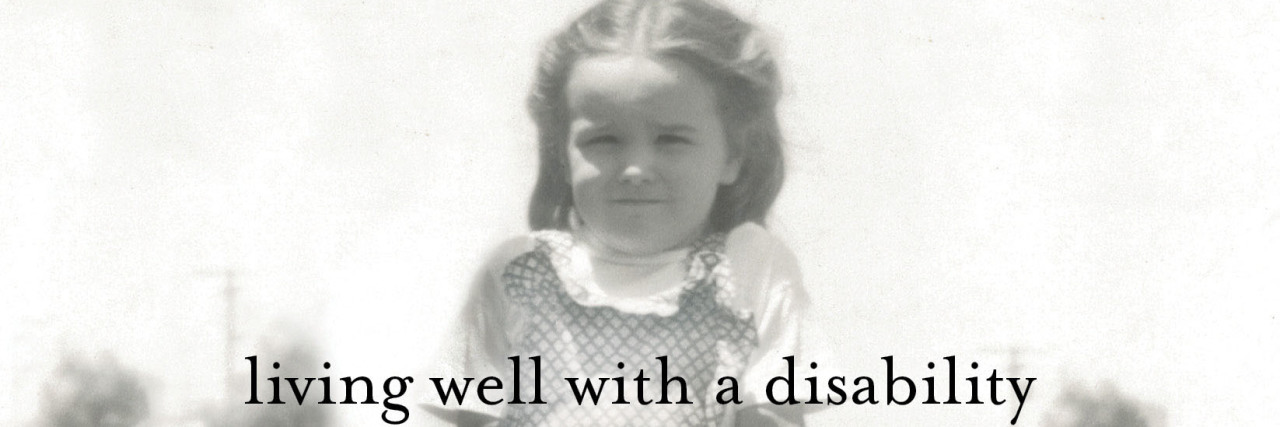“What’s wrong with your hip? Did you have surgery?” a well-meaning woman I don’t know asks me in a drugstore. Taken aback, it takes me a moment to realize why she might think I have a hip problem, while I remember that my two-inch limp requires me to “hike” my polio-affected hip up so my drop foot clears the floor.
“Oh. No, no,” I answer, “I had polio as a child.”
This scenario repeats itself occasionally, but now I realize that although my weak, partially paralyzed and atrophied leg and foot are a major walking problem which I think would be obvious, people seem to focus on the odd hip movement resulting from my gait. My polio-affected hip actually is internally different from the other side, but I didn’t know that until X-rays revealed this 10 years ago, when I turned 60 and was having back trouble from limping for decades. My right hip and pelvis bones both grew to be elongated, trying to catch up with the left side’s growth. So observers aren’t really wrong, because there is a deformation in there, but from the outside my right hip simply looks smaller.
I actually forget that I limp, aside from the fatigue I must manage, and that I sometimes notice the horizon goes up and down, as if I were riding a tricycle with a flat tire (which I did as a child). But when I see my reflection in a store window, I’m always stunned by my lurching gait. “Oh, right, that’s how I walk,” I’ll think. A friend with spina bifida says he’s occasionally surprised by his image in store windows as well.
Less friendly senior-aged observers have approached me when I park in an accessible parking space, peering through the driver’s window and shouting with a scowl, “You can’t park here! This is for disabled people!”
I roll down the window and try to be calm while I say, “I am disabled. I had polio as a child.” I want to say, but don’t, “You don’t have to be old to be disabled.” (The women in our family look 10 years younger than we are, nice for our faces, but this situation demonstrates the common stereotype that young people can’t be disabled. I have a friend with cystic fibrosis who’s in her 30s and very pretty. She looks completely “normal,” but what’s going on inside her body causes her a world of difficulty.
“Oh. Well, you don’t look old enough to have had polio.” Usually the person will walk away in embarrassment, but sometimes sticks around to keep a sideways eye on me, just to be sure I’m not lying as I grab my crutch and limp into the store. The good news is that people are at least being protective of disabled folks’ rights.
When I travel, I have to ask very specific questions about distances. If I inquire, “How far is it to Starbucks (or Gate 56 in an airport)?” I am likely to be told, “Not far; very close,” especially from someone who does a lot of walking. Even though I am often using both of my arm cuff crutches, people usually think that since I am standing, I can walk as far as they can. People generally think disability means a wheelchair. So I have learned to ask in terms of how many blocks, not even distance in partial miles, because most people have no idea how far a quarter-mile is unless they are runners or surveyors. And that’s a very long walk for me. Fortunately, I now have an electric trike I use for longer “walks,” so I don’t rely on other people’s assessments as much. But sometimes my transport may need to be a taxi, whereas a normie would walk the distance.
Friends and relatives often assume I’m doing better than I am. I tire easily – let’s be honest, I exhaust easily, with post-polio effects – and I have to ask friends when we are out and about to wait a moment while I lean against a post or wall once in every block. I try to plan my schedule so I have no more than two errands or appointments in a day, and I need to lie down and rest daily like those who have chronic fatigue. It’s like being 10 years older than I actually am, and 20 years older than I appear.
I scout out tall stools at parties, knowing others expect to stand up for hours to talk. If I sit in a low chair, I’ll get a crick in my neck from looking up. After 25 years I have nearly trained my husband that if he’s going to engage me in a conversation when he’s sitting and I’m standing, he has to cue me about how long our chat’s going to be, so I can decide whether to sit also. There’s a concept that if you can stand at all, you’re fine.
It’s partly flattering that my nearest and dearest do not think of me as disabled, kind of a reverse stereotype. I appear to be active, and look “normal” from the waist up, even though the right side of my body didn’t grow as much as the left. I probably “do” more than I should, in terms of conserving energy. But it took me a long time to learn to ask for concessions and allowances, after a child- and young adulthood spent in trying to do almost all the things other people can do. I have started talking about these details more since I wrote my memoir, but most of the time conversations with friends and family are about our shared interests, not my medical challenges. People don’t know my true state unless I share it with them, and perception is everything.
Francine Falk-Allen is the author of “Not a Poster Child,” a memoir of her life as a polio survivor.

